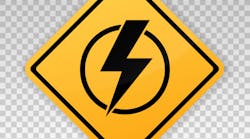It may be tempting to think it’s OK to be one or two revisions behind the current revision. After all, if the old one was good enough for three years, why do you need the new one? For one thing, communication becomes difficult when not everyone is using the same revision. Even if there were no technical changes (and there always are), references often change.
These standards are revised based on feedback from the field and input from various experts. And even if somehow everybody got everything perfect before sending the latest revision off to the printer, the dynamic environment of electrical work could introduce something new.
In the front of the 2021 revision of NFPA 70E, on page 70E-3, you will find a paragraph summarizing how it differs from the 2018 revision. For example, Article 110 has significant changes. If you examine that article, you will find these highlighted in gray. Not mentioned on page 70E-3 are the two dozen or so changes to the definitions provided in Article 100. Those are also highlighted in gray.
With most revisions, you will find new or improved illustrations, examples, explanations, fine print notes, tables, or references to other materials. You will often find improvements in clarity, so the meaning is more readily understood and less readily misunderstood. Sometimes the material is rearranged, with large chunks of it relocated to elsewhere in the standard.
In short, while the previous version of a standard such as NFPA 70E served its purpose admirably, it cannot do so indefinitely. Remember that first pair of lineman’s pliers that worked so well for you? After a time, they had to be replaced with a new pair. Thinking of electrical standards this way, especially NFPA 70E, will help you continue to do good work and return home each day.




